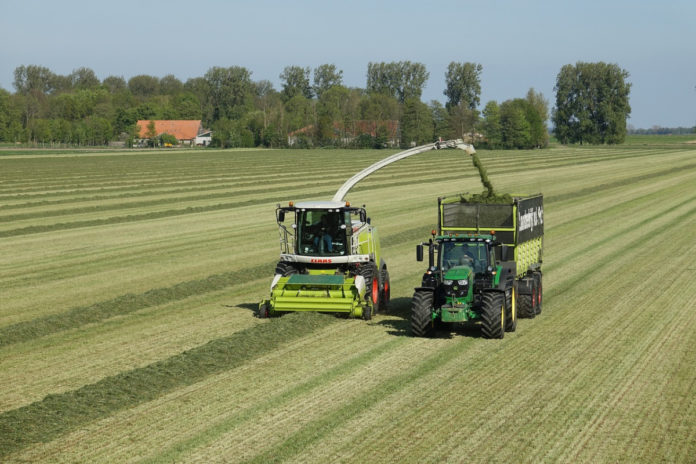Limerick City and County Council has urged all farmers to act responsibly and make silage in a “responsible environmentally friendly way”.
In a statement, the council said it is essential to ensure that all effluents arising from the silage-making process are collected, stored, and landspread to ensure that water quality is not impacted.
“Silage effluent is a particularly potent pollutant. It is 200 times more polluting than raw domestic sewage,” it warned.
According to the council, farmers should follow this guidance:
- Ensure that the silage base and associated collecting channels are free from defect. Where repairs are required, you should seek professional advice. See the Department of Agriculture, Food and the Marine building specification S.128 – Minimum Specification for Concrete Silage Bases and S.128A – Minimum Specification for Re-Surfacing of Silo Floors;
- Only use proprietary sealants where required;
- Wilt the grass prior to ensiling. The council said this helps ensure that dry matter content is at a level where the release of effluent is minimised (at least 30% DM should be attained). Cut grass should be windrowed and tedded. Low dry matter grass results in poor fermentation and can result in ‘slumping’ in the pit. This can cause channels to block and effluent to overflow to watercourses or to enter groundwater;
- If possible, take cut grass to the pit in the afternoon. This allows time for dew to evaporate;
- Ensure that grass is kept behind the drainage channels on the base. Also, ensure that the drainage channels are kept free from blockage;
- Also, ensure that the polythene cover extends beyond the channels;
- Do not overfill pits. This is dangerous from a health and safety point of view and can also result in the collapse of the pit. Where the pit’s design volume is inadequate for amount to be harvested, fill the pit to design limit and bale the remainder of the cut grass.
Other guidance
- Check regularly to ensure that all effluents are being collected. Ensure that the collection tank is fit-for-purpose and never allow it to overflow;
- Regularly check nearby drains and streams to ensure that silage effluent is not entering. Look for signs of Sewage Fungus – a grey, dirty looking mass of growth and odour);
- Do not use farmyard manure or any organic material to cover the silage pit. Ensure only clean water can flow off the silage cover. Direct to a clean water drain;
- Directly ensiled grass can release up to 30 litres of effluent per tonne for the first few days after ensiling. Therefore, keep a constant eye on the effluent collection tank;
- Where silage infrastructure is in poor condition, do not make pit silage. In this instance, make baled silage. Do not store baled silage within 20metres of any waterbody;
- Always consult with a contractor to ensure that best practice will be followed.
- In the event that you observe silage effluent leaking from the pit, you must ensure that measures are taken to prevent entry into waters (i.e. break the pathway to waters).
NFU Mutal has also issued advice to farmers regarding safety during silage season.





